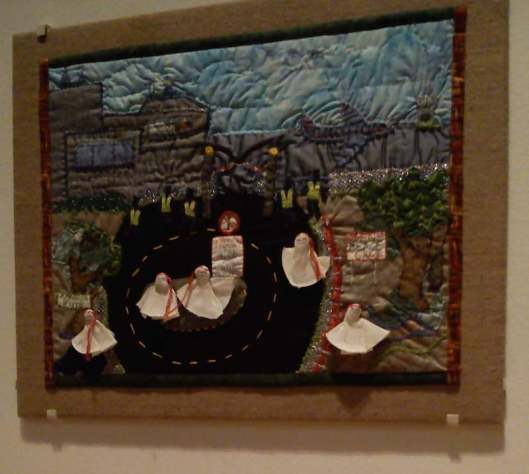Following on from my last blog entry, this short piece briefly describes the second Japanese encounter with the English language term ‘religion’, which occurred, this time, via the Dutch language. It took place in the treaty negotiations between the Japanese officials and Townsend Harris (1804-1878), the first US Consulate to Japan. In this process, Japanese translators had to be engaged with the idea of religion more intensely than on the previous occasion. Harris’ painstaking effort resulted in the Treaty of Amity and Commerce (‘Harris Treaty’) which was signed on July 29, 1858. Article Eight of Harris Treaty contains the clause on ‘religion’. When the Japan’s translation bureau chose four different Japanese words for the five instances of ‘religion’ or ‘religious’ in the original English text, the Chinese ideograph shū 宗 was employed as the central concept. In the Japanese language, the character of shū, with its Buddhist origin, generalizes the sectarian confines of Buddhist tradition itself.
The treaty negotiations between Harris and Japanese officials were conducted bilaterally via Dutch. The original English text of Harris Treaty was translated into Japanese from its Dutch version. In order to understand how the Japanese negotiators interpreted ‘religion’ in Harris’ discourse, it is important to examine the ways in which the Japanese translated the equivalent term in their negotiations with the Dutch. Almost parallel to Harris’ negotiations with the Japanese, the Dutch commissioner Jan Hendrik Donker Curtius (1817-1879) was also negotiating a Dutch treaty with the Japanese. Importantly, the Dutch treaty contains the term ‘godsdienst’, which was utilized by Harris Treaty as the Dutch translation of the English term ‘religion’. The interpretation of this Dutch terminology by the Japanese is likely to have impacted upon their understanding of the English term ‘religion’ in Harris Treaty.
The Dutch word ‘godsdienst’ was the dominant Dutch term for the English concept ‘religion’ in the nineteenth century, and it literally meant ‘service to God’. Having maintained contact with the Dutch, while the country had been closed off to other foreigners for more than two centuries, the so-called ‘Dutch learning’ (or Rangaku) intellectuals in the Tokugawa era were familiar with the Dutch language, to the extent that Japanese Dutch dictionaries had been available for Japanese intellectuals. By the early nineteenth century, the Dutch term ‘godsdienst’ had been defined in a Japanese Dutch dictionary as kami ni tsukauru hito, which means ‘those who serve kami’. The implicit notion of god in godsdienst had been translated as kami. This point is worth paying special attention to.
The Japanese concept of kami is not the same as the Western concept of God. It is in fact ‘radically different from the concept of God in Judeo-Christian tradition’. Kitagawa explains:
The term kami means (etymologically) “high,” “superior,” or “sacred.” It is usually accepted as an appellation for all beings which possess extraordinary quality, and which are awesome and worthy of reverence, including good as well as evil beings.
It is also important to highlight that since the sixteenth century, the Catholic notion of God had been translated into Japanese as tenshu天主. This was a concept clearly demarcated from kami. The appropriation of the term kami to denote the Dutch notion of God, therefore, indicates a tacit distinction of the Dutch godsdienst from Roman Catholicism, which had been feared by the Japanese authorities for more than two centuries as jakyō邪教 (‘heretics’ or ‘evil teaching’). In contrast to the Catholic notion of God, having been appropriated by the Japanese notion of kami, the Dutch (Protestant) idea of god had been positively accommodated in the existing Japanese cultural framework.
The demarcation between the Dutch godsdienst and Roman Catholicism is apparent in the Japanese translation of its Article 33. This clause can be translated into English as follows: ‘The Dutch have freedom to practice their own or the Christian religion, within their buildings and at the gravesites appointed for them’.[1] It contains the rather confusing phrase, ‘their own or the Christian religion’. This may be read in two different ways: ‘they have the freedom to practice their own religion or some other religion, which is called Christianity’; or ‘they have the freedom to practice their own religion, which is to say, Christianity’.
Japanese translators read this clause in the latter sense. Japan’s translation bureau originally translated it simply as ‘Protestantism’ by the Japanese term yasoshū耶蘇宗. This word was clearly distinguished from Catholicism, which was at that time called tenshukyō天主教. In addition, it is important to highlight that the Japanese interpreters chose the term yasoshū, rather than yasokyō耶蘇教, which was also a common designation of Protestantism in Japan. This indicates the interpreters’ preference of shū over the concept of kyō. While kyō is a generic notion of teaching, shū means a class of sectarian tradition. This is related to the Japanese policy strategy, which discouraged doctrinal debates, whereas it tolerated ritual practices. This conceptual preference continued into the negotiations for Harris Treaty.
This specific way of translating godsdienst, however, was slightly altered in later years. It should be noted that all the Japanese international treaties, including this Dutch treaty, were retranslated after 1884. When the retranslation of the Japanese-Dutch Supplementary Treaty was published in 1889, the term yasoshū in the earlier translation, was replaced with the broader term of shūhō which literally means ‘sect law’[2]. Nevertheless, both terms in the earlier and the later translations still share the concept of shū, which played a key role in translating the term ‘religion’ employed in Harris Treaty.
—
[1] The new Japanese translation of the Article 33 published in 1889 goes: ‘阿蘭人其館内并定りたる埋葬所に於て其國の宗法を修するには障なき事’.
[2] The Dutch original version of the Article 33 is: ‘De Nederlanders hebben vrijheid tot uitoefening van hunne eigene of de Christelijke godsdienst, binnen hunne gebouwen en binnen de voor hen bestemde begraafplaatsen’ (Gaimushō Kirokukyoku 1889: 525).

